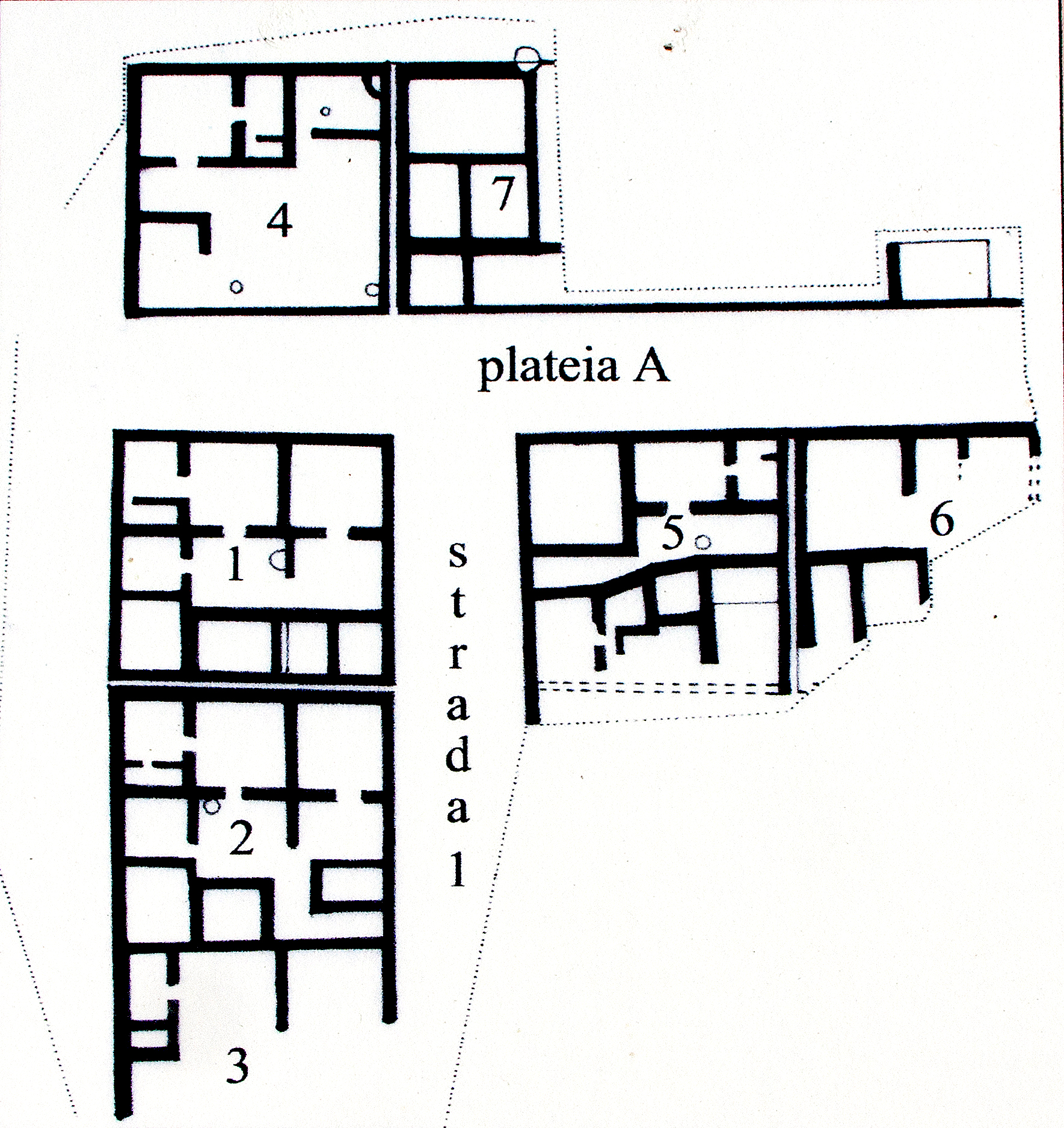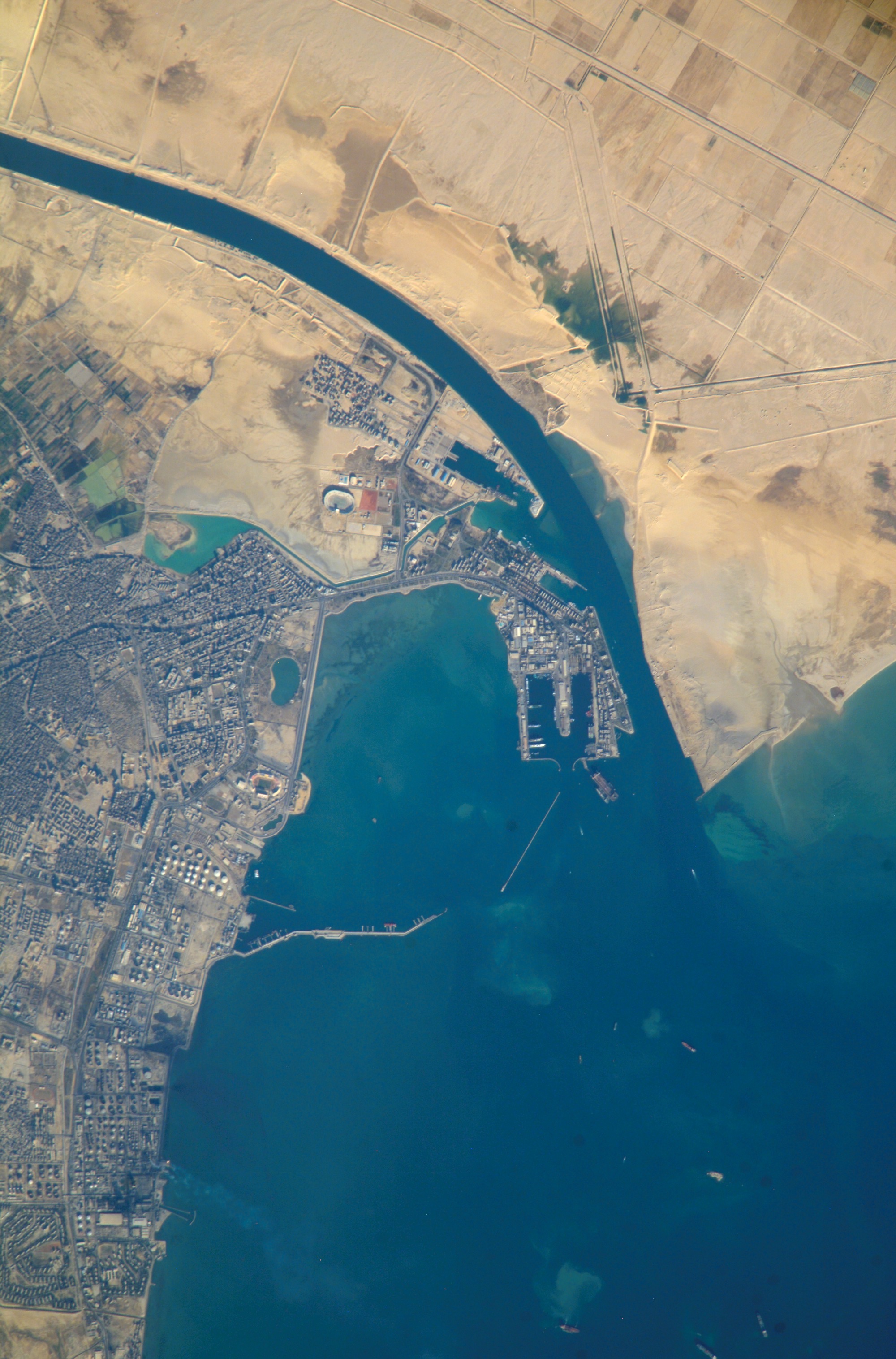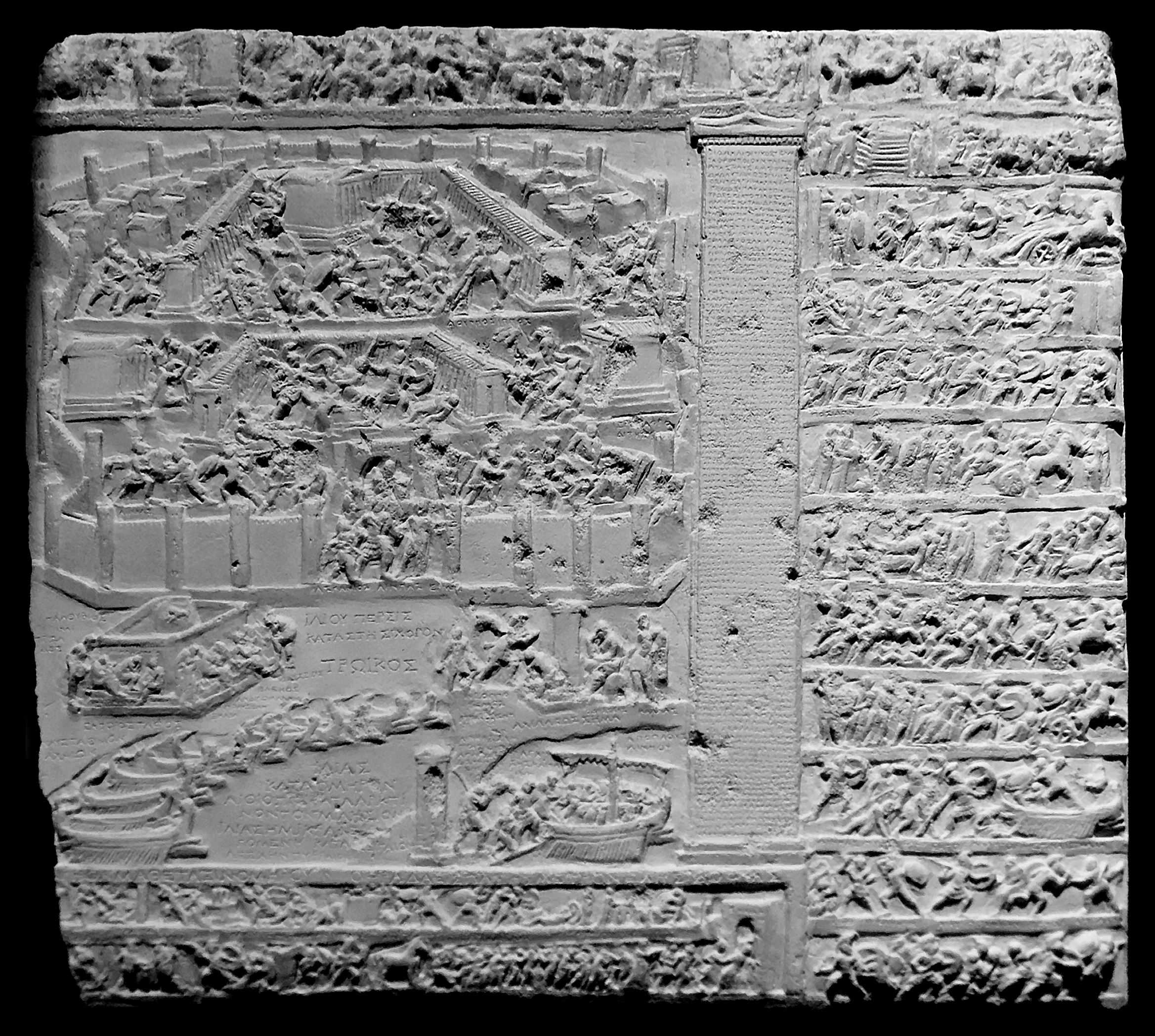|
Salso
The Salso ( Sicilian: ''Salsu''), also known as the Imera Meridionale (Greek: ; Latin Himera), is a river of Sicily. It rises in the Madonie Mountains (Latin: Nebrodes Mons; Sicilian: Munti Madunìi) and, traversing the provinces of Enna and Caltanissetta, flows into the Mediterranean at the western end of the Gulf of Gela at the seaport of Licata, in the Province of Agrigento. Its small deltaic system there is dominated by marine processes rather than fluvial ones. It is a seasonal torrent, with brief but violent floods during the winter rains (from November to February), and all but dry in summer droughts. In November 1915 the iron bridge across the river's mouth collapsed during floods, and 119 people were swept away in the flood and lost.C. Amore et al., "Historical evolution of the Salso River mouth, with respect to the Licata harbour system" in Eurocoast/EUCC,''Littoral 2002'' on-line) The Salso, which is the longest river of Sicily at , has a drainage basin area of . [...More Info...] [...Related Items...] OR: [Wikipedia] [Google] [Baidu] |
Licata
Licata (, ; grc, Φιντίας, whence la, Phintias or ''Plintis''), formerly also Alicata (), is a city and ''comune'' located on the south coast of Sicily, at the mouth of the Salso River (the ancient ''Himera''), about midway between Agrigento and Gela. It is a major seaport developed at the turn of the twentieth century, shipping sulphur, the refining of which has made Licata the largest European exporting centre, and asphalt, and at times shipping cheese. West of the port city there is a series of pocket beaches separated by wave-cut headlands as high as . (Amore 2002). History Ancient The settlement was frequented by the Phoenicians who traded there between the 12th and 8th centuries BC. At the end of the 7th century BC the Geloi (inhabitants of ancient Gela) built a fortified station to guard the mouth of the Salso (''Himera'') river. In the first half of 6th century BC Phalaris, tyrant of Agrigento, built a fortified outpost. The first settlement was probably ... [...More Info...] [...Related Items...] OR: [Wikipedia] [Google] [Baidu] |
Sicily
(man) it, Siciliana (woman) , population_note = , population_blank1_title = , population_blank1 = , demographics_type1 = Ethnicity , demographics1_footnotes = , demographics1_title1 = Sicilian , demographics1_info1 = 98% , demographics1_title2 = , demographics1_info2 = , demographics1_title3 = , demographics1_info3 = , timezone1 = CET , utc_offset1 = +1 , timezone1_DST = CEST , utc_offset1_DST = +2 , postal_code_type = , postal_code = , area_code_type = ISO 3166 code , area_code = IT-82 , blank_name_sec1 = GDP (nominal) , blank_info_sec1 = €89.2 billion (2018) , blank1_name_sec1 = GDP per capita , blank1_info_sec1 ... [...More Info...] [...Related Items...] OR: [Wikipedia] [Google] [Baidu] |
Province Of Caltanissetta
The Province of Caltanissetta ( it, provincia di Caltanissetta; scn, pruvincia di Nissa or ; officially ''Libero consorzio comunale di Caltanissetta'') is a province in the southern part of Sicily, Italy. Following the suppression of the Sicilian provinces, it was replaced in 2015 by the Free municipal consortium of Caltanissetta. It contains 22 ''comuni'', which are listed at Comuni of the Province of Caltanissetta. Its coat of arms is a red crest and two green leaf stems on top with a laurel leaf on the right and a crown in the middle. The River Salso is the main river of the province; it is long and originates in the province of Palermo, and it flows into the Mediterranean in this province at the end of the Gulf of Gela. Bordering provinces and metropolitan cities In counterclockwise order: * Province of Agrigento, west * Metropolitan City of Palermo, north-west * Province of Enna, north * Metropolitan City of Catania, north-east * Province of Ragusa, east Geography T ... [...More Info...] [...Related Items...] OR: [Wikipedia] [Google] [Baidu] |
Imera Settentrionale
The Imera Settentrionale (Greek: , Latin: ''Himera''; it, Imera Settentrionale or also ) is a river of Sicily, rising in the Western Madonie mountains near Cozzo Levanche, and flowing approximately through the ''comuni'' of Caltavuturo, Campofelice di Roccella, Cerda, Collesano, Scillato, Sclafani Bagni, Termini Imerese and Valledolmo (all in the Province of Palermo) to the Tyrrhenian Sea at the site of the ancient city of Himera. The drainage area is , making it one of the principal rivers of Sicily to flow into the Tyrrhenian.Bacino Idrografico del fiume Imera Settentrionale, Relazione bacino Regione Siciliana, p. 1-2 Historical significance Himera was the ancient name of two rivers in Sicily, the Imera Settentrionale flowing to the north into ...[...More Info...] [...Related Items...] OR: [Wikipedia] [Google] [Baidu] |
Mediterranean Sea
The Mediterranean Sea is a sea connected to the Atlantic Ocean, surrounded by the Mediterranean Basin and almost completely enclosed by land: on the north by Western and Southern Europe and Anatolia, on the south by North Africa, and on the east by the Levant. The Sea has played a central role in the history of Western civilization. Geological evidence indicates that around 5.9 million years ago, the Mediterranean was cut off from the Atlantic and was partly or completely desiccated over a period of some 600,000 years during the Messinian salinity crisis before being refilled by the Zanclean flood about 5.3 million years ago. The Mediterranean Sea covers an area of about , representing 0.7% of the global ocean surface, but its connection to the Atlantic via the Strait of Gibraltar—the narrow strait that connects the Atlantic Ocean to the Mediterranean Sea and separates the Iberian Peninsula in Europe from Morocco in Africa—is only wide. The Mediterranean S ... [...More Info...] [...Related Items...] OR: [Wikipedia] [Google] [Baidu] |
Debouches
In hydrology, a debouch (or debouche) is a place where runoff from a small, confined space discharges into a larger, broader body of water. The word is derived from the French verb ''déboucher'' (), which means "to unblock, to clear". The term also has a military usage. Geology In fluvial geomorphology, a debouch is a place where runoff from a small, confined space emerges into a larger, broader space. Common examples are when a stream runs into a river or when a river runs into an ocean. Debouching can generate massive amounts of sediment transport. When a narrow stream travels down a mountain pass into a basin, an alluvial fan will form from the mass deposit of the sediment. The four largest rivers (the Amazon, the Ganges-Brahmaputra, the Yangtze and the Yellow) are responsible for 20% of the global discharge of sediment in to the oceans by debouches. Geography In fluvial geography, a debouch is a place where a body of water pours forth from a narrow opening. Some examples ar ... [...More Info...] [...Related Items...] OR: [Wikipedia] [Google] [Baidu] |
Tyrrhenian Sea
The Tyrrhenian Sea (; it, Mar Tirreno , french: Mer Tyrrhénienne , sc, Mare Tirrenu, co, Mari Tirrenu, scn, Mari Tirrenu, nap, Mare Tirreno) is part of the Mediterranean Sea off the western coast of Italy. It is named for the Tyrrhenian people identified with the Etruscans of Italy. Geography The sea is bounded by the islands of Corsica and Sardinia (to the west), the Italian Peninsula (regions of Tuscany, Lazio, Campania, Basilicata, and Calabria) to the north and east, and the island of Sicily (to the south). The Tyrrhenian Sea also includes a number of smaller islands like Capri, Elba, Ischia, and Ustica. The maximum depth of the sea is . The Tyrrhenian Sea is situated near where the African and Eurasian Plates meet; therefore mountain chains and active volcanoes such as Mount Marsili are found in its depths. The eight Aeolian Islands and Ustica are located in the southern part of the sea, north of Sicily. Extent The International Hydrographic Organization defin ... [...More Info...] [...Related Items...] OR: [Wikipedia] [Google] [Baidu] |
Vibius Sequester
Vibius Sequester (active in the 4th or 5th century AD) is the Latin author of lists of geographical names. Work ''De fluminibus, fontibus, lacubus, nemoribus, gentibus, quorum apud poëtas mentio fit'' is made up of seven alphabetical lists of geographical names mentioned by poets, especially Virgil, Ovid and Lucan. Several of the names do not appear in our copies of the poets; unless this is the result of carelessness or ignorance by the compiler, he must have had access to sources no longer extant. The lists are: # ''Flumina'' (rivers/waterways) # ''Fontes'' (springs) # ''Lacus'' (lakes) # ''Nemora'' (forests) # ''Paludes'' (marshes) # ''Montes'' (mountains) # ''Gentes'' (peoples) The work was mainly copied by Italian humanists in the second half of the 9th century. The work is best known for preserving a dactylic pentameter The dactylic pentameter is a verse-form which, in classical Greek and Latin poetry, follows a dactylic hexameter to make up an elegiac couplet. It ... [...More Info...] [...Related Items...] OR: [Wikipedia] [Google] [Baidu] |
Himera
Himera (Greek: ), was a large and important ancient Greek city, situated on the north coast of Sicily at the mouth of the river of the same name (the modern Imera Settentrionale), between Panormus (modern Palermo) and Cephaloedium (modern Cefalù) in the ''comune'' of Termini Imerese. Many of its remains can be visited and there are two museums on the site. History Foundation and earliest history 250px, Ideal reconstruction of the Temple of Victory. Himera was the first Greek settlement on this part of the island and was a strategic outpost just outside the eastern boundary of the Carthaginian-controlled west. Thucydides says it was the only Greek city on this coast of Sicily, which must however be understood with reference only to independent cities. Mylae, which was also on the north coast and certainly of Greek origin, was a dependency of Zancle (modern Messina). All authorities agree that Himera was a colony of Zancle, but Thucydides tells us that the emigrants from Z ... [...More Info...] [...Related Items...] OR: [Wikipedia] [Google] [Baidu] |
Stesichorus
Stesichorus (; grc-gre, Στησίχορος, ''Stēsichoros''; c. 630 – 555 BC) was a Greek lyric poet native of today's Calabria (Southern Italy). He is best known for telling epic stories in lyric metres, and for some ancient traditions about his life, such as his opposition to the tyrant Phalaris, and the blindness he is said to have incurred and cured by composing verses first insulting and then flattering to Helen of Troy. He was ranked among the nine lyric poets esteemed by the scholars of Hellenistic Alexandria, and yet his work attracted relatively little interest among ancient commentators, so that remarkably few fragments of his poetry now survive. As David Campbell notes: "Time has dealt more harshly with Stesichorus than with any other major lyric poet." Recent discoveries, recorded on Egyptian papyrus (notably and controversially, the Lille Stesichorus),P.J. Parsons, "The Lille Stesichorus", ''Zeitschreift für Papyrologie und Epigraphik'' Vol. 26 (1977), pages 7 ... [...More Info...] [...Related Items...] OR: [Wikipedia] [Google] [Baidu] |
Strait Of Sicily
The Strait of Sicily (also known as Sicilian Strait, Sicilian Channel, Channel of Sicily, Sicilian Narrows and Pantelleria Channel; it, Canale di Sicilia or the Stretto di Sicilia; scn, Canali di Sicilia or Strittu di Sicilia, ar, مضيق صقلية ' or ') is the strait between Sicily and Tunisia. The strait is about wide and divides the Tyrrhenian Sea and the western Mediterranean Sea, from the eastern Mediterranean Sea. The maximum depth is . Deep currents in the strait flow from east to west, and the current nearer the surface travels from west to east. This unusual water flow is of interest to oceanographers. There are regular ferries between Sicily and Tunis across the Strait of Sicily. The island of Pantelleria lies in the middle of the strait. The Strait of Sicily is located between, at the eastern side, Tunisia and the Malta Bank and on the northern side, Sicily, Italy. Within the Central Mediterranean sea it is one of the topographically complex region ... [...More Info...] [...Related Items...] OR: [Wikipedia] [Google] [Baidu] |
Pomponius Mela
Pomponius Mela, who wrote around AD 43, was the earliest Roman geographer. He was born in Tingentera (now Algeciras) and died AD 45. His short work (''De situ orbis libri III.'') remained in use nearly to the year 1500. It occupies less than one hundred pages of ordinary print, and is described by the ''Encyclopædia Britannica'' (1911) as "dry in style and deficient in method, but of pure Latinity, and occasionally relieved by pleasing word-pictures." Except for the geographical parts of Pliny's ''Historia naturalis'' (where Mela is cited as an important authority), the ''De situ orbis'' is the only formal treatise on the subject in Classical Latin. Biography Little is known of the author except his name and birthplace—the small town of Tingentera or Cingentera in southern Spain, on Algeciras Bay (Mela ii. 6, § 96; but the text is here corrupt). The date of his writing may be approximately fixed by his allusion (iii. 6 § 49) to a proposed British expedition of ... [...More Info...] [...Related Items...] OR: [Wikipedia] [Google] [Baidu] |






